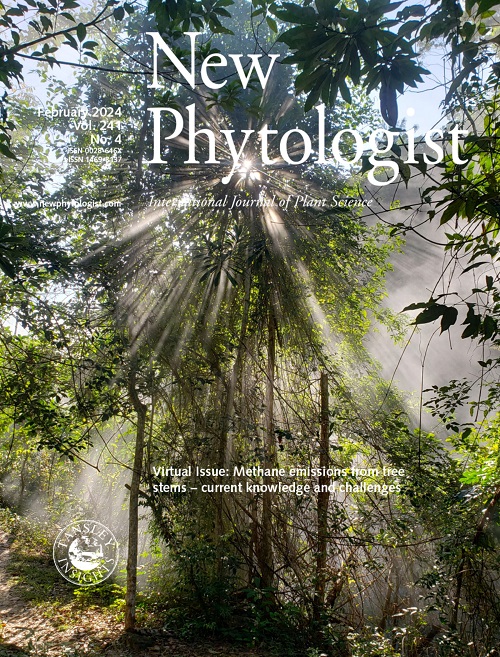Plant genome size modulates grassland community responses to multi-nutrient additions
IF 8.1
1区 生物学
Q1 Agricultural and Biological Sciences
引用次数: 0
Abstract
- Grassland ecosystems cover c. 40% of global land area and contain c. 40% of soil organic carbon. Understanding the effects of adding nutrients to grasslands is essential because they provide much of our food, support diverse ecosystem services and harbor rich biodiversity.
- Using the meadow steppe (grassland) study site of Inner Mongolia, we manipulated seven key nutrients and a cocktail of micronutrients to examine their effects on grassland biomass productivity and diversity.
- The results, explained in structural equation models, link two previously disparate hypotheses in grassland ecology: (1) the light asymmetry competition hypothesis and (2) the genome size-nutrient interaction hypothesis. We show that aboveground net primary productivity increases predominantly from species with large genome sizes with the addition of nitrogen, and nitrogen plus phosphorus. This drives an asymmetric competition for light, causing a decline in species richness mainly in species with small genome sizes.
- This dynamic is likely to be caused by the nutrient demands of the nucleus and/or the scaling effects of nuclear size on cell size which impact water use efficiency. The model will help inform the best management approaches to reverse the rapid and unprecedented degradation of grasslands globally.
植物基因组大小调节草地群落对多种营养物质添加的响应
草地生态系统覆盖了全球陆地面积的40%,含有全球土壤有机碳的40%。了解向草原添加养分的影响是至关重要的,因为它们为我们提供了大部分食物,支持多种生态系统服务,并拥有丰富的生物多样性。以内蒙古草甸草原(草地)为研究对象,研究了7种关键营养素和微量营养素对草地生物量生产力和多样性的影响。在结构方程模型中解释的结果将草原生态学中两个先前不同的假设联系起来:(1)光不对称竞争假说和(2)基因组大小-营养相互作用假说。我们发现,在添加氮和氮加磷的情况下,地上净初级生产力主要来自基因组大小较大的物种。这导致了对光的不对称竞争,导致物种丰富度的下降,主要是在基因组小的物种中。这种动态可能是由细胞核的营养需求和/或细胞核大小对细胞大小的缩放效应造成的,从而影响水的利用效率。该模型将有助于为最佳管理方法提供信息,以扭转全球草地迅速和前所未有的退化。
本文章由计算机程序翻译,如有差异,请以英文原文为准。
求助全文
约1分钟内获得全文
求助全文
来源期刊

New Phytologist
PLANT SCIENCES-
CiteScore
17.60
自引率
5.30%
发文量
728
审稿时长
1 months
期刊介绍:
New Phytologist is a leading publication that showcases exceptional and groundbreaking research in plant science and its practical applications. With a focus on five distinct sections - Physiology & Development, Environment, Interaction, Evolution, and Transformative Plant Biotechnology - the journal covers a wide array of topics ranging from cellular processes to the impact of global environmental changes. We encourage the use of interdisciplinary approaches, and our content is structured to reflect this. Our journal acknowledges the diverse techniques employed in plant science, including molecular and cell biology, functional genomics, modeling, and system-based approaches, across various subfields.
 求助内容:
求助内容: 应助结果提醒方式:
应助结果提醒方式:


